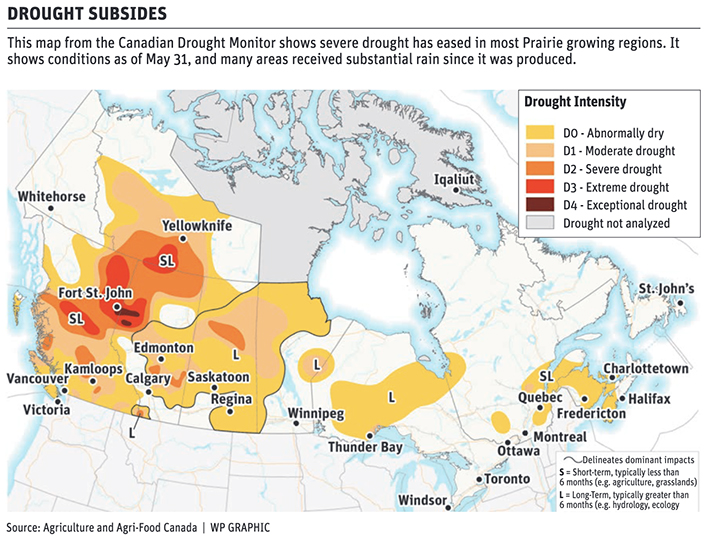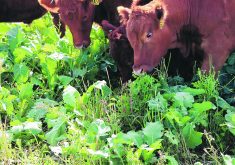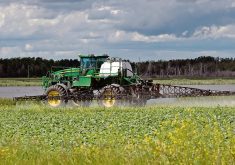Farmers in Western Canada can breathe a sigh of relief. Rain across most of the Prairies this spring has helped recharge groundwater and lowered drought risk across the region.
“We had an extremely warm winter with lower than normal precipitation in most areas,” said Trevor Hadwen, agroclimate specialist for Agriculture and Agri-Food Canada. “We were a little worried going into the spring, for sure. But this has calmed us down.”
While the wet spring delayed seeding in some fields, most producers across the Prairies have sufficient topsoil moisture to get the crop off to a decent start and they are now waiting for summer heat.
Read Also

Short rapeseed crop may put China in a bind
Industry thinks China’s rapeseed crop is way smaller than the official government estimate. The country’s canola imports will also be down, so there will be a lot of unmet demand.
The western part of the Prairies has improved the most in recent weeks.
“Our most recent drought monitor map was released (June 7), and it shows tremendous improvement in much of Alberta as well as Saskatchewan,” said Hadwen.

In fact, the drought map for Saskatchewan shows just a small pocket in the northwest with any significant drought risk.
“In that western region of the province — Kindersley, Leader, and even all the way up to the North Battleford area — it has been a little bit drier,” said Hadwen. “They’re recovering, but just not at the rate that we need. They were certainly in a much larger deficit going into the year. So we still have some concerns. But again, we’re seeing tremendous improvement.”
Alberta hasn’t fared quite as well.
“That central region of the province has a little bit of what we call that D2, or severe drought category, and a little bit of D1, which is moderate,” said Hadwen. “But the reality is that those areas were the D3s or D4s last month, so we’ve seen improvement right through the prairie region.”
Hadwen said the Peace River area seems to have missed most of the rainfall, but it doesn’t normally get the bulk of its rain until late June or early July.
“In southern Alberta a month ago, we were looking at reservoirs, like the Oldman Dam and the St. Mary’s Reservoir, at under 20 per cent capacity,” said Hadwen. “Those areas are all up to 60 to 70 per cent capacity now.”
However, subsoil is not fully recharged in Alberta and Saskatchewan.
“We have the moisture in that top root zone that will really get us through that spring period, but we really need moisture to percolate down and recharge levels further down,” said Hadwen. “So we’re going to need continued rain through this season. We don’t have those deeper moisture levels to really rely on.”
Hadwen said precipitation models don’t indicate much rain in the next few months, but there is reason for optimism from the meteorologist maxim, “rain begets rain and drought begets drought.”
“It’s a cyclical thing. You need that moisture that we’ve received to break the drought, so now that we’ve got the moisture in the system, we will continue to get some big rainfall events until that moisture dries out.”
“Manitoba is a little bit different story than the rest of the Prairies at this point,” said Hadwen. “Manitoba has received the most moisture. (The province) received about 200 millimetres of precipitation in the central region, all the way from Winnipeg over to Brandon.”
By comparison, Saskatchewan received from just over 100 mm around the Regina area to a maximum of about 150 mm in the area west of Saskatoon. Most of Alberta is in the 100-125-mm range.
Hadwen said this is typical for Manitoba because the province tends to have a wetter climate, but in recent years, southern Manitoba has been in a significant drought.
“Last year, we had some very dry conditions compared to what we would normally get,” he said, adding that timely rains, as well as conditions cooler than the rest of the Prairies, helped out a bit.
“But this year, that 200 millimetres for that central southern portion of the province is really good for soil moisture, probably a little too much for some areas. That is starting to percolate and really recharge those subsoils.”
Hadwen had little concern for Manitoba in terms of moisture deficits and said the province has pretty much recovered. The only area of concern is in the northwest, which has received less rain.
This good news comes with a dark side: an increased risk of severe storms. The additional moisture, combined with forecasts of a hot summer, elevates the risk of severe storms.
“One of the key components of getting storm events is moisture,” said Hadwen. “If we have moisture available on the surface and we get some heat, that will breed thunderstorm activity.”
The entire region received significant moisture this spring, and Environment Canada is predicting a hot summer across the Prairies, so the risk of storms will be elevated everywhere. Not only did Manitoba receive the most moisture, but it is also predicted to be hotter in the eastern Prairies than in the west.
“We will likely get larger and more storm events than we have had in the last number of years, but we’ve been really low in terms of the number of hail events and the number of significant storm events,” said Hadwen.
Rainfall timing is also different.
“During the last couple of years, we’ve had these big rainfall events in one or two days, then dry for three weeks, and then another big event,” said Hadwen. “This year we’re getting continuous rain for two or three days, then two days of nice weather, and then two more days of rain.”
These “more organized” rain systems are a result of the jet stream moving southward.
“Last year, the jet stream was, for the most part, pushed further north and we weren’t getting those organized rainfall systems that we’ve got this spring.”
Despite ample good news, it’s too early to celebrate the end of drought.
“We’re not quite out of the woods in some parts of the Prairie region,” Hadwen warned. “The rain is going to solve the immediate moisture needs, but it still takes a long time for the pastures to fully recover, and it also takes a long time for water supplies and groundwater to fully recover.”
As well, there is still a significant moisture deficit problem.
“We have fixed the moisture deficit for most regions in the one-year time frame. But over the three-year time frame, we’re still seeing pretty big deficits so we’re still not fully out of the drought.”
















